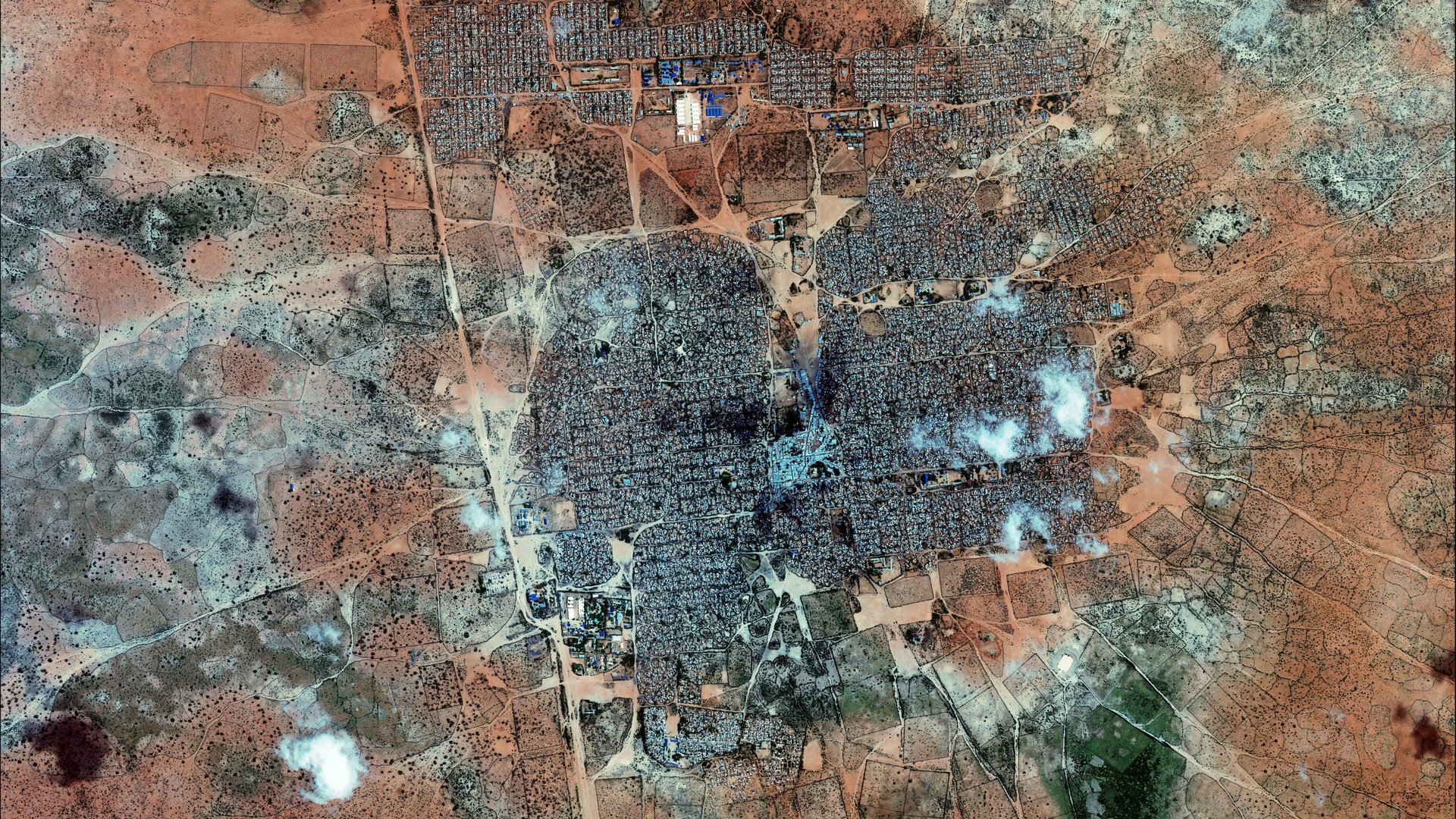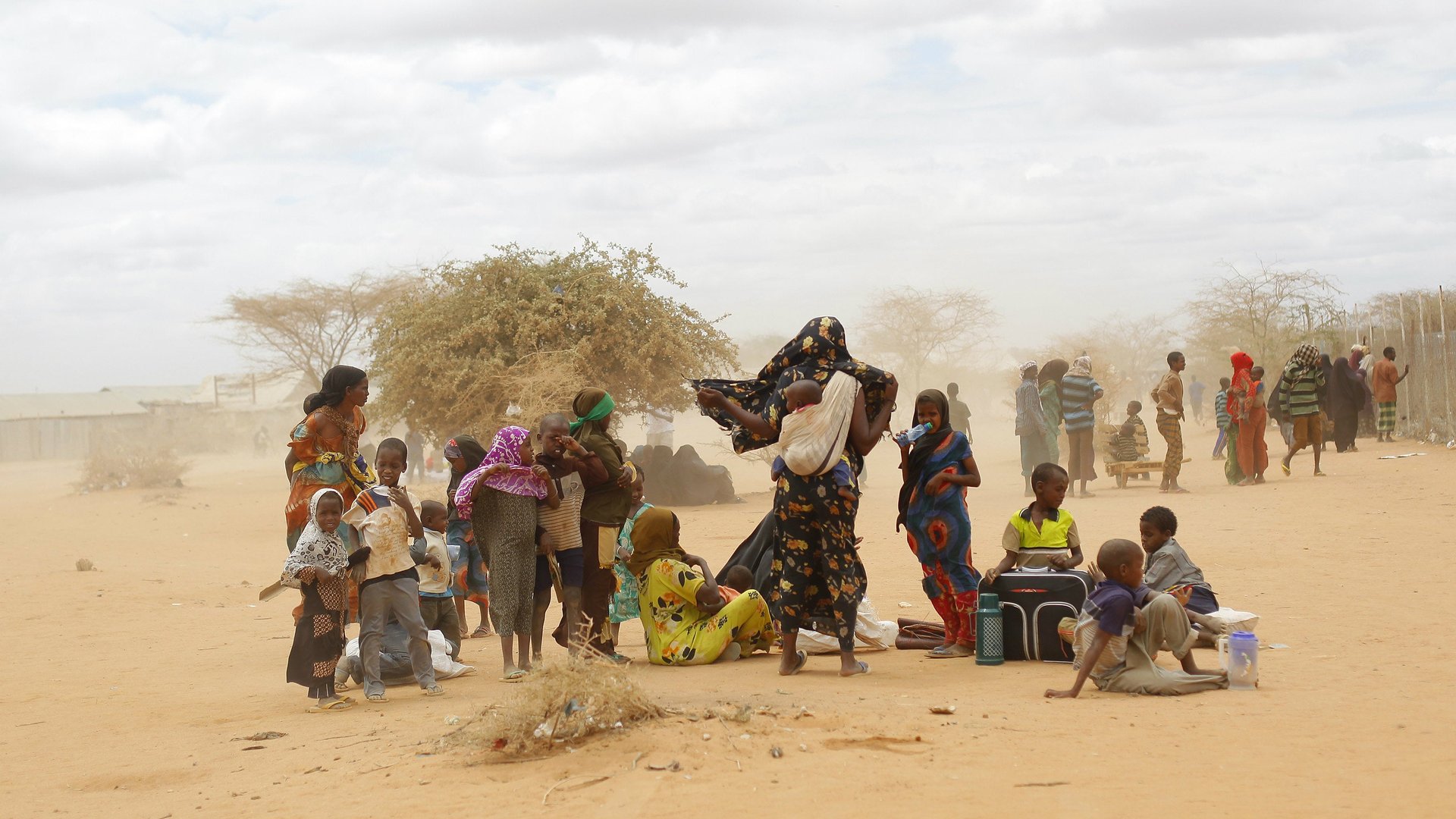The world’s largest refugee camp is reportedly closing in six months
Dadaab in Kenya’s arid northeast is the world’s largest refugee camp, housing between 263,000 to 350,000 people, mostly Somalis fleeing strife in their own country. In six months, the Kenyan government says it will close the complex down, extending its original deadline from the end of November.


Dadaab in Kenya’s arid northeast is the world’s largest refugee camp, housing between 263,000 to 350,000 people, mostly Somalis fleeing strife in their own country. In six months, the Kenyan government says it will close the complex down, extending its original deadline from the end of November.
“The government has accepted the request to extend the deadline for the completion of repatriation of Somali refugees, and this is essential to the closure of the Dadaab refugee complex, by six months,” interior minister Joseph Ole Nkaissery said yesterday.
Kenya has threatened to close Dadaab several times since it opened in 1991, citing concerns that the complex harbors al-Shabaab militants and sympathizers. The Somali-based Islamist group working to topple the Somali government has launched several attacks on Kenya over the last five years in retaliation for Kenya’s support of African Union troops in Somalia.

Over the last few months as the November deadline approached, Kenyan officials had said little of the planned closure, giving refugees in the camp hope that the government’s latest threat was an idle one. “They had hoped the authorities had forgotten. The announcement brought another shadow over them,” says Laetitia Bader, researcher for Human Rights Watch’s Africa division.
Whether or not Kenya actually closes the camp, these announcements have had the desired effect of pushing refugees to leave. Fearing they will be forcibly deported later, many are taking the risk of returning to Somalia, despite continued fighting, under a UN repatriation program that promises them $400 in “returns assistance.” So far this year, 13,422 Somali refugees have voluntarily gone back to their country, according to the UNHCR, the UN’s refugee agency.
Rights groups say the repatriation program is far from voluntary and that Kenya, with the help of the UNHCR, is violating international law that protects refugees and asylum seekers from being repatriated against their will. Dadaab residents interviewed by Amnesty International said Kenyan officials had intimidated them into leaving, threatening that later they would have ”to go on foot with your babies on your backs.” More than a dozen returnees also told Foreign Policy that they felt forced to leave Kenya.
Some who left for Somalia have eventually returned to Dadaab, their best option despite its looming closure. Two brothers interviewed by Amnesty said they saw their father killed and were being forcibly recruited by al Shabaab before escaping and returning to Kenya. Another who left for Mogadishu returned after being injured in mortar attack. She told Human Rights Watch, ”If they force us to go, I have no option.”
While the refugees have a little more time, the uncertainty continues. ”There’s still this deadline hanging over the refugees,” says Bader. “They don’t know what will happen at the next deadline.”